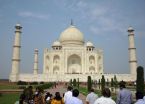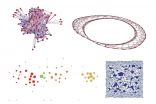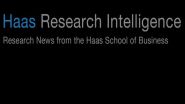(Press-News.org) This news release is available in German.
FRANKFURT. Frankfurt physicists have once again contributed to resolving a disputed matter of theoretical physics. Science has long since known that, contrary to the old school of thought, helium forms molecules of two, three or even more atoms. Exactly what helium consisting of three atoms looks like, however, has been disputed by theoretical physicists for about 20 years. Besides the intuitive assumption that the three identical components form an equilateral triangle, there was also the hypothesis that the three atoms are arranged linearly, in other words in a row. As the group of scientists led by Prof. Dr. Reinhard Dörner and his graduate student Jörg Voigtsberger report in the current edition of the prestigious journal Nature Communications, using the COLTRIMS reaction microscope, they were able to demonstrate that the truth lies in between.
"Nature gets out of it quite elegantly here: We looked at the helium molecule" under our reaction microscope, and it was found that He3 is like a cloud," says Voigtsberger, whose dissertation is the source of the publication results. "It makes no difference whether it's linear or triangular or another configuration: all are equally probable, as is typical for quantum mechanics." Moreover, Voigtsberger and his coworkers' results put an end to an idea carried over from school days: The He3 molecule does not consist of a solid structure, as is the case, for example, with the hydrogen molecule H2 and the carbon dioxide molecule CO2, in which the individual atoms quasi impinge directly on one another. In contrast, He3 is like a cloud - the distance between the atoms is roughly ten times the atomic radius.
Finally, Voigtsberger and Dörner report that one variant of the He3 molecule behaves in an unusual way: normal helium atoms consist of two protons and two neutrons. If one of the three helium atoms is replaced by the lighter isotope, which consists only of two protons and one neutron, then the molecule will be in a so-called quantum halo state: the lighter isotope is further away from the other two atoms than should be possible according to classic physics. "One can visualise this as ping pong balls in a soup bowl," explains Dörner. "Normal atoms collect at the bottom of the bowl, at a minimum of the potential. If they overcome the potential mountain, in other words the wall of the bowl, they will be completely separated from the molecule. Thus the lighter helium isotope is, as it were, outside of the bowl but, due to the quantum mechanical tunnel effect, it still "notices" the atoms in the bowl and cannot simply fly away."
The COLTRIMS reaction microscope, with which the experiments on helium molecules were conducted, has already demonstrated its versatility many times: in 2013, Dörner's work group had already been able to resolve a dispute of theoretical physics. In that case, the COLTRIMS experiments proved that the position of the Danish physicist Niels Bohr in the "Einstein-Bohr debates" 80 years ago was correct and, shortly before that, other physicists from the atomic physics work group used COLTRIMS to "film" the destruction of a molecule by a strong laser pulse - a reaction so fast that it cannot be captured by an ordinary camera.
INFORMATION:
Publication: J. Voigtsberger et al., Imaging the structure of the trimer systems 4He3 and 3He4He2 in: Nature Communications, 5:5765, DOI: 10.1038/ncomms6765
Information: Prof. Dr. Reinhard Doerner, Institut für Kernphysik [Institute of Nuclear Physics], Campus Riedberg, Telephone (069) 798-47003, doerner@atom.uni-frankfurt.de
Goethe University is a research-oriented university in the European financial centre Frankfurt. In 2014, it celebrates its 100th birthday. Founded in 1914 with purely private funds by liberally-oriented Frankfurt citizens, it is dedicated to research and education under the motto "Science for Society", to this day as a citizens' university. Many of the early benefactors were Jewish. Over the past 100 years, Goethe University has carried out pioneering work in the social and sociological sciences, economics, chemistry, quantum physics, brain research and labour law. It gained a unique level of autonomy on 1 January 2008 by returning to its historic roots as a privately funded university. Today, it is among the top ten in external funding and among the top three largest universities in Germany, with three clusters of excellence in medicine, life sciences and the humanities. More information at: www2.uni-frankfurt.de/gu100
Publisher The President of Goethe University, Frankfurt am Main Editor Ulrike Jaspers, Consultant for Scientific Communication, Department of Marketing and Communication, Grüneburgplatz1, 60323 Frankfurt am Main, Tel: (069) 798-13066, Fax (069) 798-761 12531, jaspers@pvw.uni-frankfurt.de
Patients suffering from the world's most common heart rhythm disorder can have their long-term outcomes significantly improved with an aggressive management of their underlying cardiac risk factors, according to University of Adelaide researchers.
Atrial fibrillation (AF) is increasingly responsible for dementia, stroke and death, and has a significant impact on healthcare costs. With electrical "short circuits" believed to be responsible for the abnormal beating of the heart in AF patients, one currently used treatment is to burn the tissue surrounding the problem area, ...
Mammals that lived during the time of the dinosaurs are often portrayed as innocuous, small-bodied creatures, scurrying under the feet of the huge reptiles. In reality, this wasn't the case, and a new fossil from Madagascar further underscores this point, revealing fascinating perspectives on the growing diversity of Mesozoic mammals. Vintana sertich had previously been described in a preliminary note in November of this year, but a new memoir in the Journal of Vertebrate Paleontology delves far deeper into the morphology and paleoecology of this amazing fossil animal. ...
A simple supplement could be a safe and cost-effective way of reducing heart disease in individuals born with a low birth weight, suggests research from the University of Cambridge. The study, carried out in rats, also raises the possibility of developing a blood test to indicate how much damage there is in the aortas of these individuals.
Researchers at the Institute of Metabolic Science fed low birth weight rats a supplement of the molecule co-enzyme Q (CoQ) and found that in those rats that grew quickly after birth, the supplement prevented cells in the aorta from ...
Techniques now used to reconstruct 3D models based on multiple photos of a building, object or scene can also be leveraged to automatically estimate illumination conditions depicted in a collection of photographs, scientists at Disney Research and Université Laval report.
Everyone knows that objects can look markedly different depending on lighting conditions, the physical characteristics of the objects and the angle at which they are viewed. That makes it difficult for photo editors to insert 3D objects into imagery and make them appear as if they are reflecting ...
The Taj Mahal's iconic marble dome and soaring minarets require regular cleaning to maintain their dazzling appearance, and scientists now know why. Researchers from the United States and India are pointing the finger at airborne carbon particles and dust for giving the gleaming white landmark a brownish cast.
Knowing the culprits in the discoloration is just the first step in cleaning up the Taj Mahal. Scientists now must determine where the particles are coming from to develop strategies for controlling them.
"Our team was able to show that the pollutants discoloring ...
New York, NY, December 9, 2014 - Fourteen years after the attack on the World Trade Center (WTC), a case study in the current issue of Annals of Global Health identifies several elements that have had a critical impact on the evolution of the WTC response and, directly or indirectly, on the health of the WTC-exposed population. The case study also recounts and assesses post-disaster monitoring efforts, recent scientific findings from the World Trade Center Health Program (WTCHP), and explores the implications of these experiences for ongoing and future environmental disaster ...
The global spread of Ebola is due to the complex interactions between individuals, societies, and transportation and trade networks. Understanding and building appropriate statistical and mathematical models of these interactions is vital to responding to the challenges of living in a networked world. There are, of course, many other examples of complex networks -- from national power grids and airline networks to social networks, neuronal networks and protein-protein interactions.
In a new study published in the Beijing-headquartered journal National Science Review, ...
This news release is available in Japanese.
New research published in the Proceedings of The Royal Society A by members of the Mathematical Soft Matter Unit at the Okinawa Institute of Science and Technology Graduate University examines the energies at work in a closed flexible loop spanned by a soap film. While the underlying experiments are simple enough to be replicated in a kitchen sink, the research generates potentially important questions and changes how we think about different disciplines from material science to vertebrate morphogenesis. Aisa Biria and Professor ...
UNIVERSITY OF CALIFORNIA, BERKELEY'S HAAS SCHOOL OF BUSINESS -Too many vehicles on the highway inevitably slow down traffic. On the Internet information highway, consumers value high-speed Internet service, but there is little reason to think broadband traffic congestion will improve if the Federal Communications Commission abandons net neutrality, according to economic research.
In their paper, "The Economics of Network Neutrality," Ben Hermalin, Haas Economics Analysis and Policy Group, and Nicholas Economides, Berkeley-Haas visiting professor from NYU'S Stern School ...
Scientists at the University of Strathclyde and City University of New York have created methods that dramatically simplify the discovery of biological gels for food, cosmetics and biomedicine, as published in the journal Nature Chemistry.
Strathclyde's Dr Tell Tuttle and Professor Rein Ulijn, the director of nanoscience at City University New York's new advanced research centre who also holds a position at Strathclyde, believe their team's breakthrough dramatically simplifies discovery of functional gels that can be used in a wide range of applications.
Until now, ...




